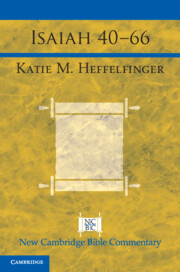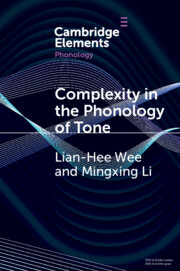45 results
7 - Heritage Cantonese
-
- Book:
- Heritage Languages
- Print publication:
- 27 June 2024, pp 167-191
-
- Chapter
- Export citation
9 - Mixing It with the Media
-
- Book:
- Compelling Communication
- Published online:
- 30 May 2024
- Print publication:
- 30 May 2024, pp 262-291
-
- Chapter
- Export citation
1 - Word Stress
- from Part 1 - Prosody and Phonology
-
-
- Book:
- The Cambridge Handbook of Slavic Linguistics
- Published online:
- 16 May 2024
- Print publication:
- 23 May 2024, pp 9-28
-
- Chapter
- Export citation

Isaiah 40–66
-
- Published online:
- 04 May 2024
- Print publication:
- 09 May 2024
14 - Prosodic Pragmatics in Context
- from Part III - Pragmatic Approaches to Context
-
-
- Book:
- The Cambridge Handbook of Language in Context
- Published online:
- 30 November 2023
- Print publication:
- 14 December 2023, pp 314-328
-
- Chapter
- Export citation
Theoretical approaches to grammatical tone
-
- Article
-
- You have access
- Open access
- HTML
- Export citation
Tone and morphological level ordering in Dagaare
-
- Article
-
- You have access
- Open access
- HTML
- Export citation

Complexity in the Phonology of Tone
-
- Published online:
- 21 October 2023
- Print publication:
- 16 November 2023
-
- Element
- Export citation
Grammatical tone mapping in Ekegusii
-
- Article
-
- You have access
- Open access
- HTML
- Export citation
8 - Intonation in Varieties of English
-
- Book:
- The Sounds of English Around the World
- Published online:
- 25 August 2023
- Print publication:
- 14 September 2023, pp 240-273
-
- Chapter
- Export citation
7 - English Stress and Rhythm
-
- Book:
- The Sounds of English Around the World
- Published online:
- 25 August 2023
- Print publication:
- 14 September 2023, pp 212-239
-
- Chapter
- Export citation
Neighbours and relatives: accounting for spatial distribution when testing causal hypotheses in cultural evolution
-
- Journal:
- Evolutionary Human Sciences / Volume 5 / 2023
- Published online by Cambridge University Press:
- 04 September 2023, e27
-
- Article
-
- You have access
- Open access
- HTML
- Export citation
The choice of musical instrument matters: Effect of pitched but not unpitched musicianship on tone identification and word learning
-
- Journal:
- Applied Psycholinguistics / Volume 44 / Issue 5 / September 2023
- Published online by Cambridge University Press:
- 04 August 2023, pp. 844-857
-
- Article
-
- You have access
- Open access
- HTML
- Export citation
The features and geometry of tone in Laal
-
- Article
-
- You have access
- Open access
- HTML
- Export citation
3 - The sound system
- from Unit I - Introduction
-
- Book:
- A Student Grammar of Chinese
- Published online:
- 27 April 2023
- Print publication:
- 11 May 2023, pp 14-29
-
- Chapter
- Export citation
11 - Suprasegmentals
-
- Book:
- Phonetics and Speech Science
- Published online:
- 19 May 2023
- Print publication:
- 11 May 2023, pp 273-310
-
- Chapter
- Export citation
Chapter 3 - Hölderlin and the Philosophers
- from Part I - Disorientating Kant
-
- Book:
- Orientation in European Romanticism
- Published online:
- 13 October 2022
- Print publication:
- 20 October 2022, pp 42-84
-
- Chapter
- Export citation
An acoustic study of Tetsǫ́t’ıné stress: Iambic stress in a quantity-sensitive tone language
-
- Article
-
- You have access
- Open access
- HTML
- Export citation



